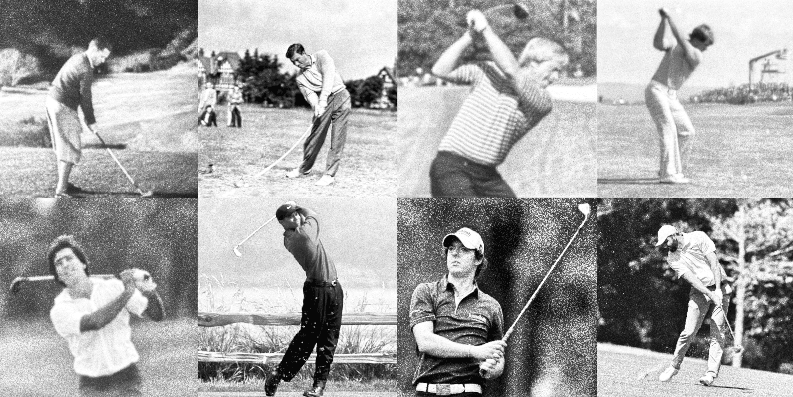
The Golf Swing Evolution – A Time-Travel through Eight Eras
This time-travel article is all about understanding why and how the golf swing evolution has manifested itself over the years. A kind of pattern recognizing attempt where you likely can reach a few good insights. It’s heavily influenced by equipment studies, general swing overviews, swing technique analysis and more general major events.
Furthermore, It’s more of a general evaluation of what happened in pretty roughly chopped time eras, rather than nitty gritty details in every single year. I’ll start in the 1940s and work my way towards the modern game.
Finally, at the end of the article you have my subjective, but hopefully still valuable, takeaways.
The 1945-1962 – Golf’s Golden Age Era
Highlighted Players
Ben Hogan, Sam Snead, Arnold Palmer & Peter Thompson
General Golf Swing Observations
By far my favorite swing era where the harmony and complete usage of the swing arc was the most defining factor.
You get a feeling of players being in complete control of their faculties in both the mental and physical departments. A nice example of this is the match between Ben Hogan and Sam Snead where Hogan won and hit every single green during the round where a typical par 4 was drive and then a full 4 iron. If you’ve never watched it do it here. It’s hard to translate this performance into the modern game, but since most par 5’s today are reached on two with an iron, it definitely says something. (I wouldn’t be surprised if a 69 back then was more of a 62-63 today.)
Arnold Palmer would make use of his entire body and every single inch of the arch (and past the finish), Sam Snead would also be pretty body boosting but more effortless, Ben Hogan would be tighter, shorter and more controlling, and finally Peter Thompson would portray the simplest motion ever to enter professional golf.
Let’s dive into mr Thompson’s motion and the feel of that you could play golf blind folded with this style of motion. No wonder he could win The Open three times in a row between 54-56 (also 58 and 65). He was actually critiqued to not hit the ball long enough to play in the US. So he went there and won once in 1956. He just preferred british golf. The critique lingered and it led him to the senior tour in 1985 and winning nine (!!) events during the year.
This is basically a “no funny swing business allowed” era where you need to be in full control of your driving components of your golf swing.
Equipment Effects
Compared to today’s off the stock equipment irons where 4-8 degrees flatter and the driver somewhere between 9-12 degrees flatter. Why does this matter? It influences your hand position at impact severely and forces you to release the golf club much more than today’s lighter more upright makes. The old equipment was from a dead mass perspective much heavier which forced harmonization with natural power output.
Swing Technique Comments
There is a big separation of what golfers said that they did and what they actually did. E.g. Hogan says he leads with the lower body (which he definitely does) but he forgets to mention that he creates so much downswing width that it’s remarkable. Generally these players had so many pure shallowing components that they could go ahead and use the steepening components through the ball much more than modern golf.
An example: Mr Hogan could rotate his chest so aggressively through the ball since he had saved it in the chronological chain and could add it where it matters the most = at impact.
Other General Comments
This is indeed the era where I feel that golf was most secretive. I’m quite sure that no one really said what they did or atleast never explained their most inner drivers (their biggest secrets). It wasn’t like today where being on tour is basically enough to set you for life financially, but where only the top contenders would be able to live out of golf.
Also, for the best players, the top teaching positions were available and they needed some secrets for their teaching studios after their careers.
Golf’s Golden Age creates massive personal motivation. To dig in, replicate, try to understand and go deep on why the golfers were so harmonic and simplistic in their movements. This is basically the reason for the FMM Swing Development .(combined with a little bit of the next era).
The Golden Bear Era 1962-1979
Highlighted Players
Jack Nicklaus, Gary Player, Lee Trevino, Billy Casper, Johnny Miller, Tom Weiskopf & Tom Watson.
General Golf Swing Observations
Jack Nicklaus portrayed a much more powerful presence (excluding Arnold Palmer) in comparison to the previous era. He was taught power first growing up and this more or less influenced his entire career. He basically outpowered 95 % of the competition and also brought magnificent putting together with the most efficient mental faculties in golf history. That’s a pretty neat little recipe for becoming the best of all time. I would say, to my knowledge, that Nicklaus more powerful swing style inspired more golfers than anyone else up to this point.
Johnny Miller, Tom Weiskopf and Tom Watson basically mirrored Jack’s movements with their personal twist. Miller slightly more aggressive, Weiskopf using his height advantage and Watson a smoother more natural version. Lee Trevino, Billy Casper and Gary Player all portrayed more Hoganesque movements with their own more manipulated versions.
The Golden Bear forced development into golf because of his power dominance and winning streaks. To be honest this absolute focus on power drove the swings more towards injury prone positions. The swings mainly used the same dynamics of swing arc usage but boozted it with much more aggressive body usage.
Swing Technique Comments
For mr Nicklaus the usage of the swing arc on a more vertical angle created higher hands, more rotation and an even more usage of the feet and lower body. In other words he managed to create a bigger swing arc than anyone in the previous era. More distance for the club to travel in this power source (using the swing arc) delivered more speed output. The instruction of keeping his head still forced a slight reverse c posture to the golden bear’s follow through and was influential for his back issues during the later parts of his more active career.
Where Arnold Palmer used more of a sling technique (outracing his arms with his body in the downswing phase) Nicklaus managed to stay more harmonic in the motion even at ridiculous power output. Johnny Miller, Tom Weiskopf and Tom Watson all mirrored the core Nicklaus movement.
As mentioned both Trevino and Casper manipulated their more hoganesque swings. The natural swing arc orbit was altered in the strike zone towards the target. This created a huge boost in control at the cost of some power and strange body angles (right lean). Gary Player was purest in his swing representation from the previous era.
Equipment Effects
We are still in the blades and persimmon period of golf where clubs are recently flat in lie angles (although more upright since many go for a more steep swing plane) which in turn promotes great usage of core natural power dynamics. I’m quite sure that the deadweight of the club lightened up a little compared to the previous era.
The Post Nicklaus Dominance Era – 1980-1989
Highlighted Players
Seve Ballesteros, Tom Watson, Bernhard Langer, Nick Faldo & Greg Norman
General Golf Swing Observations
Ballesteros would be the wildest in look and feel but with intact dynamics and control, Watson (second mention) manifested his smooth version of Nicklaus swing dynamics, Bernhard Langer showcased a slightly more controlled version and Nick Faldo entered the later parts of this period with one of the purest moves in golf’s history. The Great White Shark / Greg Norman made his way onto the scene with a swing so powerful it could be up there in power output with mr Nicklaus himself.
Also Sandy Lyle, Craig Stadler, Hal Sutton and Raymond Floyd portrayed the swinging essence from the Golden Bear Era with slightly less aggressiveness than Nicklaus himself.
Swing Technique Comments
All highlighted players show high hands and rather “steep” top backswing positions with a neutral or slightly open blade (quite the opposite to many modern swings where the blade is closed). Through efficient downswing arc usage they managed to create such shallow striking positions that they could work that spinny golf at low enough spin levels to master the extremes of golf.
Tom Watson might be the best swing study object to observe natural power in creation and acceleration. He was maybe 5 yards shy of Nicklaus in his prime but could perform it with a much smoother and harmonized motion. Check it out here. An interesting part of comparing Watson and Nicklaus is that the latter was a muscle package whilst Watson was rather thin. Controlling the natural forces in the club with a power dynamics skill set of Watson’s magnitude is more than impressive.
On the other side of the spectrum Greg Norman exhibits tremendous power WITH natural club manipulation. Playing on an even steeper swing plane he actually went ahead and released so much towards the target that the natural orbit of the club was tweaked. This forced strain on his body and, from a performance level, more importantly a more rotating blade (likely playing slighlty too upright lie angles also). Some more negative people will say that mr Norman was a choker. I just think he had taken his power obsession a little too far and that his technique was worse in comparison to e.g. Nicklaus or Watson. If you play day 4 with razor thin blades and an extremely spinny ball technique flaws will reveal themselves…
The All Over the Place Era 1 (1990-1997)
Highlighted Players
Nick Faldo, Curtis Strange, John Daly, Payne Stewart, Fred Couples, Ian Woosnam, Jose Maria Olazabal, Tom Kite, Nick Price & Colin Montgomery
General Golf Swing Observations
The subsegment title is all over the place and that’s exactly what you will get. When the equipment started “improving” alongside the golf ball developed for less spin swings started going all over the place. The coaching collaborations went haywire, and funky movements were no longer excluded from the arenas.
- Curtis Strange, Ben Crenshaw, Tom Kite, Ernie Els, Hale Irwin, Ian Baker-Finch presented pure old school swinger movements with less power output but still were very much competitive on the major scene.
- Nick Faldo morphed from the one of purest swing in golf to a more machine-like presence whilst winning title after title. This after collaborations with Mr Leadbetter. I believe the collabroation started in the late 80s forcing a year off from being competitive.
- John Daly emerged taking the swinging motion to new “big arc” levels using the biggest overswing in golf but still keeping the long drives in the fairway. In one way the biggest genius in golf.
- Colin Montgomery, although not winning a major, won basically everything else without any coaching collaborations but just using a homemade swinging motion that harnessed the simple components of the old greats.
- Payne Stewart, Fred Couples and Vijay Singh portrayed the ability to produce great power without being quick. Smooth tempo beauty at the center stage.
- Nick Price, Ian Woosnam and Jose Maria Olazabal all had tighter movements at faster tempos where simplicity was the common denominator.
- Even very “strange swings” like Paul Azinger or Corey Pavin could make the biggest winner circle.
- Behind the scenes Mac O’Grady’s influence was huge for the bracket of non major winning but still awesome golfers.
Swing Technique Comments
The appearance of 2 plane downswing as an outcome from coaching concepts started show themselves. Back in the day the swing plane discussion (except for Hogan’s glass pane in his book) wasn’t that prominent. You swung high or low. Now much more technical swings entered the main stage.
I won’t go ahead and dissect every single little swing here but rather just say that focus was taken away from what really matters in golf (in my opinion) = develop the skill set of harmonizing natural power and you’ve solved all swing “problems”. This video of Bob Brue’s Golf Clinic paints the perfect picture of how crazy swing methods had become and how missing the forrest for all the trees was more or less a fact.
Equipment Effects
Metalwoods with performance adapted graphite shafts together with cavity back clubs, less flat lie angles and a less spinny golf ball created the possibility to swing “away from the natural core motion” and portray an array of different swings.
Other General Comments
My own subjective analysis here is that when a dominant force like Nicklaus isn’t leading the way then it becomes harder to choose a path. This lack of clarity opens up for all kinds of prophets. But this was about to change…
The Tiger Dominance Era 1997-2005
Colin Montgomery concluded his 3rd round Masters press room appearance by saying “Tiger Woods is 9 shot clear. And I’m sure it will be higher tomorrow”. After 4 rounds Tiger Woods had won the masters with 12 strokes in his first ever non-amateur Augusta performance.
Just let that sink in.
From a swing model perspective this created the biggest time travel in history since Tiger Woods didn’t follow any self proclaimed masters (e.g. Leadbetter said that Tiger’s swing was wrong after the win. wrong….). Tiger idolized and was inspired by one person. Jack Nicklaus. His own motion was a modern version of it utilizing his entire body in the biggest arc in golf (except maybe Daly).
The swing change after his 1997 win made him the biggest winning machine since Snead and Nicklaus. It was a complete carnage between 1997-2005. The much needed clarity of a clear golf leader was back and the byproduct of clear dominance started to show straight away.
Other Highlighted Players
David Duval made his appearance into golf and actually was up there with Tiger Woods for a while. He didn’t share the same inner drive to win over and over again but fell off the scenes rather quickly but he was very interesting from a swing method perspective. He showcased a slow smooth motion with somewhat different inner drivers than the old school players. Maybe only Annika Sorenstam performs something similar.
Phil Mickelson, Padraig Harrington, Payne Stewart, Retief Goosen, Ernie Els, Vijay Singh and Angel Cabrera all portrayed the smoother version of the old school swinging motion whilst Tiger had the same core but stood out as a power monster (much like Jack back in the day).
Sidenote: I feel a bit sorry for Phil Mickelson. Place him outside of the Tiger period and he wins 10-12 majors. He is one of the most skilled players the game has ever seen. A bit similar to Watson happening to time Jack Nicklaus later prime.
Swing Technique Comments
This is basically going back to the roots of golf by utilizing the swing arc in the most optimal way. Tiger Woods kind of took all “swing methods” developing in the late 80s and 90s and trashed them with one single blow. Mr Woods managed to create a golf swing that took the natural power mechanics of the 1940-70s whilst learning from the actual mechanical development of the 90s. This milk shake created the most beautiful yet powerful swing ever to enter golf (in my opinion).
Sure, you could still see loads of different swings on tour made possible from equipment and ball changes but when the Big Cat played it just changed the perception of swing technique again. Paul Azinger famously witnessed one of Tiger’s opening tee shots in the 97 Masters and was more or less blown away from his attempts that year.
Equipment Effects – Modern Development vs Old School Solutions
The metalwood had come to stay and also more upright clubs together with a even stronger presence of cavity back irons. The equipment manufacturers started taking more space with big contracts and it took away some of the absolute need for natural power harmony. E.g. Payne Stewart was “forced” to play equipment that kind of destroyed a bit of his motion.
If you look at Tiger Woods in 2001 (on this awesome clinic) you can see him swing firstly a very flat spoon metalwood. This swing is harmonic and amazing. Then he gets the more upright (more upright even though a longer club…) titanium driver in his hands and the swing becomes slightly more choppy. Then he hits his more favored persimmon driver and the Tiger goodness is back. It takes a trained eye and many repetitions to see it but if you have the time, look carefully.
An interesting reluctance of changing to the modern game is Tiger’s steel shaft usage. Once you dive into the old school technique a bit more you’ll see that being in connection with the club is of utmost importance. Being able to use this connection to your benefit basically trumps any equipment advances and this is the reason why Tiger played a steel shaft well into the mid 2000s. My tin foil hat speculation is that if he could choose entirely himself he’d play a flat persimmon with a steel shaft all the way and would never have been forced into all the swing changes later in his career. (But then again, he quit the Harmon partnership because of his tutor saying that he had reached a perfect golf swing, so who knows…)
The Catching Tiger Aftermath 2008-2014
Very similar to what happened after the Nicklaus dominance in the later 60s and 70s the complete scene was changed. But there was a bit of a confusing tendency between the aftermaths. Woods kept constantly changing his swing whilst Nicklaus kept his the same for his entire career.
These constant swing changes I would assume offset the easiness of following him and also induced major problems with Tiger’s body.
General Golf Swing Observations
Padraig Harrington displayed one of the purest motions during this time bracket and it led him to back to back Open championships. Watch it here. Also Bubba Watson (winning the Masters twice) delivered pure power harmony accompanied with one of the most aggressive body usage in golf history. Check it out here. It’s very apparent that knowing how to handle your swing arc can basically take your swing in any direction if you just got the swing arc basics down (the announcer claims that he is dropping his club inside when my absolute interpretation is that he is just swinging on his natural downswing arc and “drops nothing”).
Another cool throwback observation from this era is that a young Northern Irish kid entered the scene. A kid that had one idol. Tiger Woods. Rory McIlroy’s movement in 2007-2010 is about the purest to ever enter golf. Then the coaching started and his movement became more machine like. He was on the path to absolute golf dominance but was basically led away from the “natural juices of swing arc usage” in favor of a more two plane exit to the left motion. With the driver this kind of behavior isn’t really possible. Who is arguably the best driver of the last decades? Rory McIlroy.
Other noteworthy players this era are Adam Scott, Justin Rose, Jason Day, Martin Kaymer and Louis Oosthuizen. All of these showcase natural swinging patterns except for Jason Day that boozted it a bit much (releasing towards the target) leading to future back issues.
Another player that could reach success with a completely different styled motion where Zach Johnson which creates the natural segway for the next era.
The All Over the Place 2 – 2015-2022
When a cross handed putter with a short game touch of this world made his mark on the scene the equipment era had finally peaked in importance. Anyone could do anything in golf. Jordan Spieth had, for a while, the mental faculties of both Nicklaus and Woods but a swing that could fit a low digit club golfer. Except for maybe Zach Johnson’s game strategic masterpiece Masters win in 2007, Spieths more “normal golfer motion” and burst of dominance was the first hardcore evidence of a move away from that great natural swings can create champions.
This period is a huge mix and match between different swing philosophies and styles:
- Henrik Stenson and Lee Westwood (also earlier) had loads of success with Pete Cowen’s principles.
- Brooks Koepka soldiered his way to multiple majors.
- Sergio Garcia finally won a major with the biggest (except Furyk) two plane swing in golf.
- Shane Lowry, Patrick Reed, Franscesco Molinari, Brian Harman, Hideki Matsuyama and Justin Thomas displayed old school elements.
- Dustin Johnson spearheaded a new style of baseball swings which elements could later be seen in Colin Morikawa, Joaquinn Niemann, Matthew Fitzpatrick, Victor Hovland and Wyndham Clark.
- Bryson Dechambeau finally broke major ground with his initially Moe Norman’esque 1 plane project that developed into a more power dominance swing.
- John Rahm had his unique style along with e.g. Gary Woodland.
Again, all over the place kind of makes sense right?
The Right Now Perspective (early 2025 entry)
The last two seasons have started displaying another throwback towards the old school swinging elements. Scottie Scheffler, Xander Schauffele, Ludvig Åberg amongst many others start making use of the swing arc more. If my perception is correct the development moves in the direction of natural swing arc usage with harmonized natural power.
At least, from my biased little corner, I hope so.
Time Travel Conclusions
- Equipment Conclusions
- Being harmonic with difficult equipment leads to better intentional swing development.
- Flat lie angles can lead to better natural motions.
- A spinny ball forces shallow impact conditions.
- Lighter more “easy to hit” equipment together with a less spinny ball allows more unnatural swing movemenet.
- Swinging Motion Conclusions
- A clear natural swing leader inspires generations to come.
- Messing with the natural flow through forced mechanics often result in more injuries.
- The natural swing arc usage have been around since the Golden Age and always makes it way back.
- In the modern game you can swing with an array of methods whilst in the old days you were forced to certain movements.
I hope you enjoyed the article. It was a huge trip down and past memory lane.
Continued Reading Suggestions
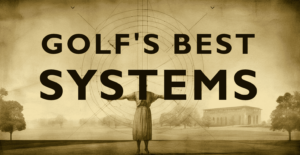
Golf’s Best Systems – Much Needed Golf Technique Context
I categorize golf motion styles into systems for the sake of clarity and understanding. No golfer fits perfectly into a single system, but without a structured framework, you’re essentially shooting in the dark. These…
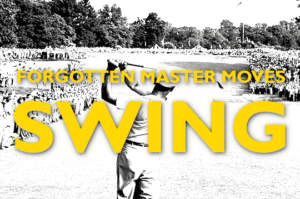
The FMM Swing – Reviving Old-School Secrets for Modern Golf
How do you produce powerful, controlled golf swings without using injury-inducing body angles? How can a golf swing be so simple that you could hit the ball blindfolded? A good golfer is often referred…

DIY Swing Change – Advice on How to Successfully Change
Do It Yourself, DIY Swing Change, is what has driven me the last decade in my golf swing development. The absolute enjoyment of figuring out a swing change myself. To all of you out…
Golf Development Consulting
I offer some services for you that are into golf technique and want some assistance.

Show Stopper Analysis – Golf Development Consulting
The Show Stopper Analysis is for you that simply don’t know what’s going wrong. I don’t charge anything for this and perform my analysis round once a week. The Deep Analysis / Jungle Guiding is for…

Deep Analysis / Jungle Guiding – Golf Development Consulting
The Deep Analysis / Jungle Guiding is about dealing with information overload. One of the biggest problems with doing it yourself and “not going as deep as you need to” is that you start taking someone…
Old School Swinger Articles
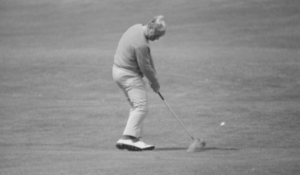
Golf’s Greatest Swingers – Natural Flow Trumps Manipulation
The debate whether the golf motion is a swing or a hit has been around forever. My absolute bias for this article is that the golf swing is a motion where the hit becomes…
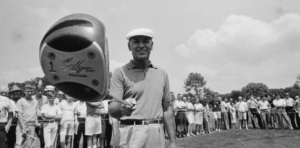
Ben Hogan Swing Rebuild – The Breakthrough That Changed Golf Forever
Nothing in golf quite compares to Hogan’s dominance in the 1940s and 1950s. The Ben Hogan swing rebuild, which he eventually shared through Five Lessons and other insights, shook the golf world—but without the…
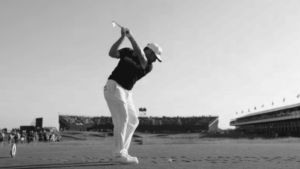
Old School Swinging Elements on Tour – A Modern Case Study
Modern top tier golfers definitely display old school swinging elements of the old greats. These swing styles are making their way back to the leaderboards today. How to spot Old School Swinging Elements? Once…
FMM Swing Articles
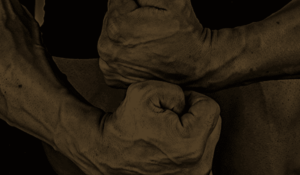
Grip Pressure in Golf Warning – Keep the Baby Bird Alive!
Old-timers had a huge advantage over us playing golf in the 2020s. Their heavy, unforgiving equipment forced them to swing with natural power dynamics. Ever tried swinging an extra-heavy club? Ever considered how grip…

Why Simple Swing Feels Can Transform Your Golf Game
I’ve conducted 5 swing changes in the last 10 years because I’ve been on a mission to understand the swings of my idols and create a swing concept that allows injury-free, powerful, and easy-to-achieve…
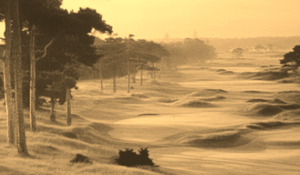
Relationship to Power – Key Variations for Better Golf
Sam Snead, Ben Hogan, Arnold Palmer, John Daly, Fred Couples, Ernie Els, Ian Woosnam, early Rory McIlroy, early Tiger Woods, Justin Thomas, Xander Schauffele, and Scottie Scheffler all have something in common—they share the…